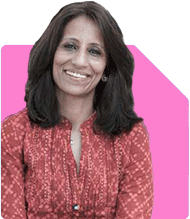How can a 25-year-old in Chennai invest 20 lakhs for 10 years?
Ramalingam Kalirajan |10878 Answers |Ask -Follow
Mutual Funds, Financial Planning Expert - Answered on Jan 31, 2025
He has an MBA in finance from the University of Madras and is a certified financial planner.
He is the director and chief financial planner at Holistic Investment, a Chennai-based firm that offers financial planning and wealth management advice.... more

Hello Ramalingam sir. Good day. I'm looking to invest 20L for long term (min 10Y). Please advise how should I diversify the same?
Understanding Long-Term Investing
Long-term investing builds wealth over time.
A well-diversified portfolio reduces risk.
Regular monitoring is essential for success.
Asset Allocation Strategy
Spreading investments across different asset classes is important.
Asset allocation should match risk tolerance and goals.
Rebalancing every year ensures stability.
Equity Investments for Growth
Equity investments provide higher returns over time.
Investing in quality mutual funds ensures professional management.
Actively managed funds perform better than index funds.
Mid-cap and small-cap funds can give high growth.
A mix of large, mid, and small caps balances risk.
Investing through a Certified Financial Planner ensures better fund selection.
Debt Investments for Stability
Debt investments provide steady returns.
They reduce overall portfolio risk.
Corporate bonds and debt funds offer better returns than fixed deposits.
Government bonds are secure but have lower returns.
A portion of capital in debt instruments gives stability.
Gold for Hedging
Gold acts as a hedge against inflation.
5-10% of the portfolio in gold is beneficial.
Sovereign gold bonds provide interest and capital appreciation.
Gold ETFs and digital gold are convenient options.
International Exposure for Diversification
Investing in global funds provides currency diversification.
Exposure to international markets enhances portfolio strength.
Developed market funds offer stability.
Emerging market funds provide growth opportunities.
Investing in REITs for Real Estate Exposure
Real estate investment trusts (REITs) provide real estate exposure.
They generate rental income and capital appreciation.
REITs are more liquid than physical real estate.
Avoiding Insurance-Based Investments
Investment-cum-insurance plans give poor returns.
ULIPs have high charges and low flexibility.
Insurance should be separate from investments.
Emergency Fund Allocation
Always keep an emergency fund ready.
Three to six months of expenses should be in a liquid fund.
This ensures financial security during unforeseen events.
Tax-Efficient Investing
Investing in tax-saving funds reduces tax liability.
Long-term capital gains from equities are tax-efficient.
Debt investments should be chosen based on tax benefits.
A Certified Financial Planner helps in tax-efficient planning.
SIP vs. Lump Sum Investment
Systematic investment plans (SIPs) reduce market timing risk.
Lump sum investments work well in market corrections.
A combination of SIP and lump sum is effective.
Regular Monitoring and Rebalancing
Portfolio performance should be reviewed yearly.
Rebalancing ensures asset allocation stays aligned with goals.
Market fluctuations require adjustments.
Final Insights
A well-diversified portfolio ensures wealth creation.
Equity, debt, gold, and international funds balance returns and risk.
A Certified Financial Planner helps in building a strong investment plan.
Monitoring investments ensures long-term success.
Best Regards,
K. Ramalingam, MBA, CFP,
Chief Financial Planner,
www.holisticinvestment.in
https://www.youtube.com/@HolisticInvestment
You may like to see similar questions and answers below
Ramalingam Kalirajan |10878 Answers |Ask -Follow
Mutual Funds, Financial Planning Expert - Answered on May 06, 2024
Ramalingam Kalirajan |10878 Answers |Ask -Follow
Mutual Funds, Financial Planning Expert - Answered on Jun 18, 2024
Ramalingam Kalirajan |10878 Answers |Ask -Follow
Mutual Funds, Financial Planning Expert - Answered on Feb 27, 2025
Purshotam Lal | Answer |Ask -Follow
Financial Planner, MF and Insurance Expert - Answered on Sep 17, 2025
Naveenn Kummar |235 Answers |Ask -Follow
Financial Planner, MF, Insurance Expert - Answered on Sep 09, 2025
Samraat Jadhav |2503 Answers |Ask -Follow
Stock Market Expert - Answered on Dec 10, 2025
Radheshyam Zanwar |6741 Answers |Ask -Follow
MHT-CET, IIT-JEE, NEET-UG Expert - Answered on Dec 10, 2025
Ramalingam Kalirajan |10878 Answers |Ask -Follow
Mutual Funds, Financial Planning Expert - Answered on Dec 10, 2025
Ramalingam Kalirajan |10878 Answers |Ask -Follow
Mutual Funds, Financial Planning Expert - Answered on Dec 10, 2025
Samraat Jadhav |2503 Answers |Ask -Follow
Stock Market Expert - Answered on Dec 10, 2025
Samraat Jadhav |2503 Answers |Ask -Follow
Stock Market Expert - Answered on Dec 10, 2025
Samraat Jadhav |2503 Answers |Ask -Follow
Stock Market Expert - Answered on Dec 10, 2025
Shalini Singh |180 Answers |Ask -Follow
Dating Coach - Answered on Dec 10, 2025
Radheshyam Zanwar |6741 Answers |Ask -Follow
MHT-CET, IIT-JEE, NEET-UG Expert - Answered on Dec 09, 2025
Naveenn Kummar |235 Answers |Ask -Follow
Financial Planner, MF, Insurance Expert - Answered on Dec 09, 2025

























